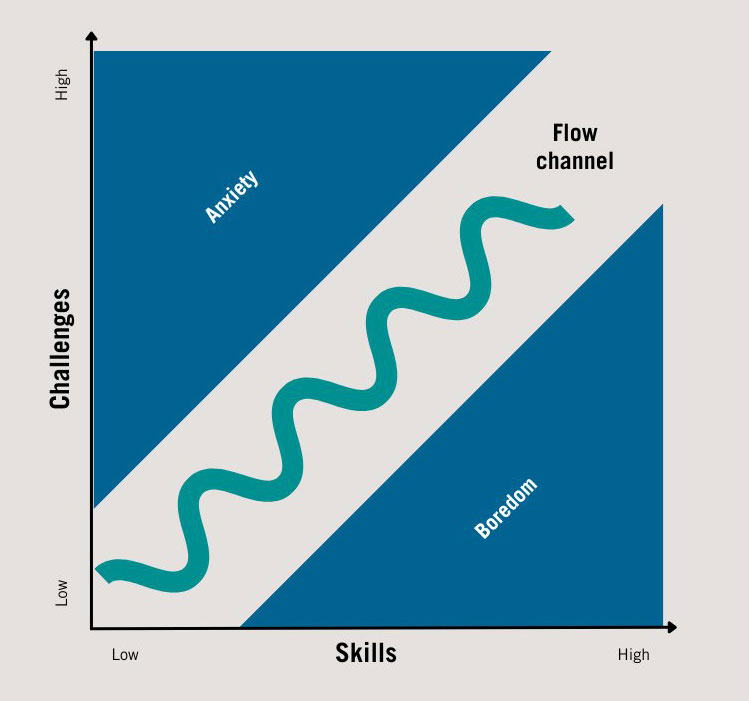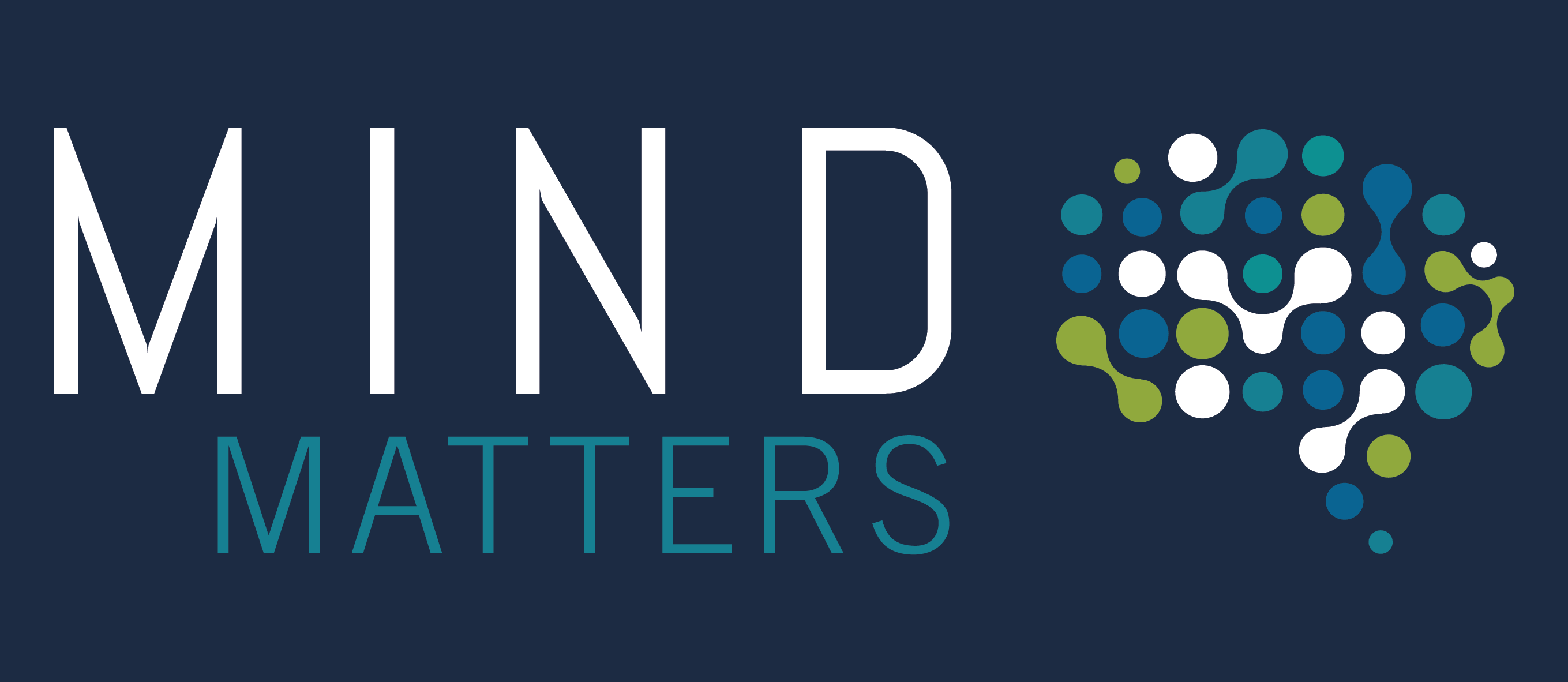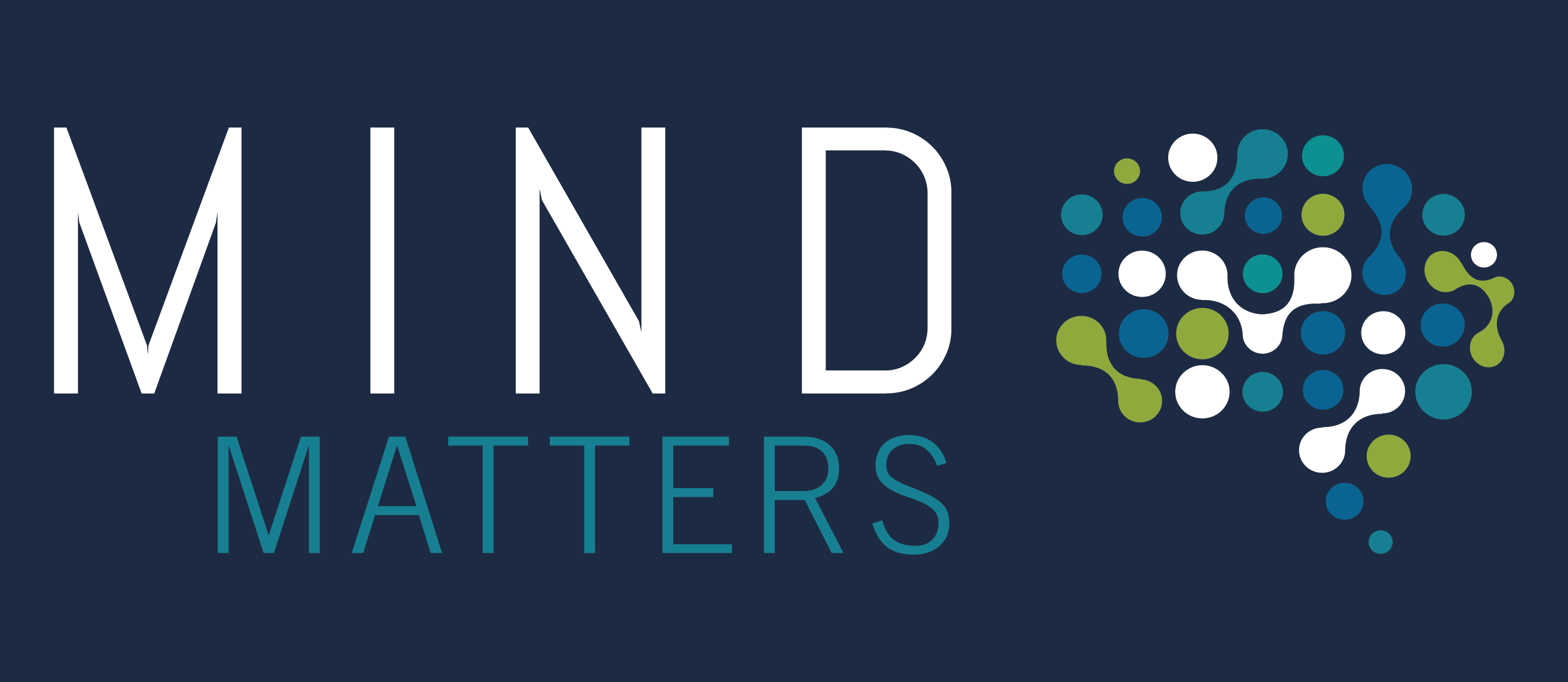

Effortless Flow: a personal guide on how to create flow experiences
Effortless Flow:
A personal guide on how to create flow experiences
BY: DR. MERET CEPERO MALO | January 25, 2024
Oh, how I love the soothing symphony of the ocean! However, as the sound of waves crashing against rocks and sand wakes me from slumber, I reluctantly realize I’m not actually at the beach. Instead, my eyes open to the harsh reality of a 05:15 a.m. wake-up call from my nature sounds alarm clock, enveloped in a warm, yellowish glow. Luckily, embracing this gadget has made pursuing my new obsession much easier.
Quickly, I prepare for my morning class, slipping into workout gear, grabbing my water bottle and gym bag, throwing on a jacket, and heading out. Upon mounting my spinning bike, a glance at the clock reveals it’s 05:55 – just five more minutes. Time, to put on my headphones. The spinning instructor, Roxy, gives her mic a final check before gradually amplifying the volume of the deep house and techno beats emerging from our listening gear. The seasoned spinners in the class have already started pedaling. Following their lead, I grab the handles of my bike and get moving, ready to immerse myself in the upcoming session. As we cycle along the undulating terrain of an imaginary landscape, Roxy’s voice becomes a guiding force, seamlessly weaving words of encouragement into the playlist. Suddenly, 45 minutes have passed. Everyone in the class is drenched in sweat, but their faces are decorated with triumphant smiles. How did time slip away so effortlessly? Odds are, we’ve collectively entered what’s known as a flow state.
In the fast-paced world we live in, achieving a state of optimal performance and profound enjoyment known as flow has become a sought-after goal. Flow represents the experience of being so absorbed by an engaging task that time dissolves, and your sense of self dissolves along with it. In this article, we will explore the science behind flow, delve into its characteristics, and provide a personal guide on how to cultivate and harness this type of “effortless effort” in your own life.
Understanding Flow
To get closer to experiencing flow, we must begin by settling on a meaningful definition, and who better to guide us than the Godfather? By that, I don’t mean the 1972 epic film starring Marlon Brando and Al Pacino, but the “Godfather of Flow” – psychologist Mihaly Csikszentmihalyi1. In the early 1960s, then-22-year-old Csikszentmihalyi was curious about what constitutes a life well-lived and moved from Hungary to the United States to pursue an education in the field of psychology. Towards the end of the 1970s, Csikszentmihalyi, now a Psychology professor at the University of Chicago, was trying to answer the following question: “What is enjoyment?”.
For his study titled “Play and Intrinsic Rewards”, Csikszentmihalyi led pilot talks with different groups of musicians, athletes, and chess players1. Subsequently, he developed a questionnaire that was designed to assess which qualities of ‘play’ people across various disciplines found intrinsically rewarding. The pattern that emerged, led to the discovery of flow1. As Csikszentmihalyi once described it:
“Flow is being completely involved in an activity for its own sake. The ego falls away. Time flies. Every action, movement, and thought follows inevitably from the previous one, like playing jazz.”
– Mihaly Csikszentmihalyi
The Challenge-Skill-Balance
In his book “Beyond Boredom and Anxiety”2, Csikszentmihalyi explains that activities like music performance, dance, and writing prove to be conducive to entering the flow state due to their structured nature and the demand for skill acquisition. Surprisingly, subsequent studies on flow experiences have shown that flow tends to be more prevalent in work settings than during leisure time3–5. How is this possible? Csikszentmihalyi termed this phenomenon the “challenge-skill-balance” and aptly put it this way: “The best moments in our lives are not the passive, receptive, relaxing times. The best moments usually occur if a person’s body or mind is stretched to its limits in a voluntary effort to accomplish something difficult and worthwhile.”
Although the concept of flow was introduced almost 50 years ago, this statement still rings true today and is backed by current research. According to Steven Kotler, author, and co-founder of the flow research collective6, the challenge-skills balance is often called the golden rule of flow7. In an interview with Big Think, he says: “We pay the most attention to the task at hand when the challenge of that task slightly exceeds our skill set. So, to do this work and to get good at it, you have to get comfortable with being uncomfortable. You want to stretch, but not snap.” 7
In psychology, the importance of the equilibrium between challenge and ease is also highlighted in the “Flow Channel Model”1 (see below). When our skill level is relatively low and the challenge is too high, we tend to experience anxiety. Conversely, if our skill level exceeds the low challenge level by a lot, we will become bored with the task rather quickly. Thus, when trying to achieve a flow state, the essence lies in striking the perfect balance between an activity that is neither too easy nor excessively demanding.


As Steven Kotler described in his Big Think interview7, there are a few ways to “freeload” on focus and facilitate flow by getting in tune with our intrinsic motivators. The five most common intrinsic motivators are curiosity, passion, purpose, autonomy, and mastery. If some of these factors sound oddly familiar to you, it’s because I wrote about them in our previous blog post on the topic of purpose and intrinsic motivation (click here if you want to explore it for context). As we will see in the next section, our favorite “feel-good-neurochemical” dopamine also plays a role when it comes to flow.
Your Brain in Flow State
Although the psychological concept of flow is very relatable and has been around for a while, the neurobiological underpinnings of flow are highly debated and remain unclear8. This can be explained by the fact that most of the ‘flow state’ research conducted to date, has hinged on subjective measures of flow experiences which were obtained through verbal reports or questionnaires. A recent, systematic review on the neural basis of flow points out that although many studies with varying methodologies have provided crucial insights into the topic, it is still difficult to draw concrete conclusions about the functional neural correlates of flow9.
Nevertheless, a few brain regions, networks, and neurochemical messengers have emerged as potential candidates involved in creating a flow state. For instance, the dorsolateral prefrontal cortex (DLPC), as well as the central executive network (CEN) and default mode network (DMN) are thought to be important for flow experiences, given their role in attention, executive function and reward circuitry of the brain8–10. A study evaluating the activation patterns of video game players in flow revealed activity in the reward system, error monitoring, orbito-frontal cortex, temporal poles, and the motor system11. For the video game players, the reward system was particularly engaged during game events with a skill-challenge balance, signifying moments of mastery and rewarding experiences for the player11. As discussed in our previous article on intrinsic motivation, the release of dopamine enhances optimism, energy levels, and dedication to the task. Thus, understanding the role of dopamine in flow states is crucial for comprehending its impact on optimized performance and human behavior.
Flow follows Focus
Considering all we have learned about flow so far; a common prerequisite for achieving it seems to be our ability to focus our attention on the present moment. By creating attentional focus, we can train our mind to entirely immerse itself in the task at hand, erecting a fortress against external distractions8,10. Other important factors that have been shown to contribute to our experience of flow are: a perceived control over or a transcendent merging with an activity, time distortion, a disconnect from our sense of self-awareness and our physical needs (i.e. hunger or fatigue), as well as a serene feeling of calm and reduced stress8–10,12–14.
Furthermore, flow tends to arise when an activity is rewarding in and of itself, a state often described as an “autotelic experience”2,3. Psychological studies also point towards a link between autotelic personalities, their ease of entering flow states, and their increased reports of overall well-being15. Therefore, the idea of “living well by flowing well”15 doesn’t just highlight the mental benefits of flow, but showcases that its benevolent touch extends to our physical well-being as well. Research illuminates that immersing ourselves in flow experiences regularly can be protective against symptoms of burnout16, and lead to improved physical health17. Flow, therefore, becomes a choreography of the mind and body that transforms ordinary activities into extraordinary experiences, and benefits our overall health and satisfaction, well after the flow experience itself has ended.
How to go with the flow
Now that we are equipped with an understanding of what constitutes a flow state, it’s time to implement strategies that allow us to experience it more often. Below, I’ve compiled a list of steps you can follow to create more flow in your life:
- Be SMART: To focus your attention and enter the flow channel, choose clear goals, and work on tasks with specific, finite outcomes for a sense of direction and control. A framework that can help with this is setting SMART goals, where SMART is an acronym for Specific, Measurable, Achievable, Relevant, and Time-bound.
- Take it easy but take it: Entering the zone right between boredom and anxiety is no easy feat, so be sure to engage in activities that provide the right amount of challenge to enhance engagement. Tailoring your activities to your preferences and choosing an activity that can provide you with unambiguous feedback (i.e. shooting hoops on the basketball court and either hitting or missing) can help to create a balance between challenge and skill.
- Block them: Consider that distractions are a flow state killer and turn off your phone or block notifications while working on a task. Set aside distraction-free periods in your schedule and stick to them – ideally, these time blocks should last 90-120 minutes.
- Consider your Chronotype: Create flow routines that align with your natural productivity peaks. To find out where those productivity peaks might lie, you can take a test to identify your chronotype (i.e. early bird, night owl or third bird). Then, adjust your deep focus hours to match these natural surges in alertness – as Nadine would always say: “Manage your energy, not your time.”
- Use the Force (of Habit): Establish a ritual that cues your brain for focused work before starting a task. Try to schedule your flow windows around the same time each day or each week – regularity and habit stacking will lower the threshold for flow immensely as you get not just into a flow state, but into a flow habit.
In conclusion, effortless flow is not an elusive state reserved for a select few. Rather, it may well be one of the most universal human experiences, providing intrinsic rewards, reducing stress, and bringing meaning and joy to various aspects of life. By understanding its characteristics, the neuroscience behind it, and implementing personalized strategies, we can intentionally cultivate flow – and harness its power for creativity, skill acquisition, and personal growth.
In my opinion, the most important take-away from today’s exploration of flow is, that it can be reached by anyone, doing any sort of task. The key to flow lies not in what you do, but in how you do it. So, go ahead, try out a few of these tips and let the river of effortless flow carry you to new heights of creativity, focus, and joy.
References:
1. Csikszentmihalyi, M. Play and intrinsic rewards. J. Humanist. Psychol.15, 41–63 (1975).
2. Csikszentmihalyi, M. Beyond Boredom and Anxiety. (Josesy-Bass, 1975).
3. Csikszentmihalyi, M. & LeFevre, J. Optimal experience in work and leisure. J. Pers. Soc. Psychol.56, 815–822 (1989).
4. Baumann, N., Lürig, C. & Engeser, S. Flow and enjoyment beyond skill-demand balance: The role of game pacing curves and personality. Motiv. Emot.40, 507–519 (2016).
5. Bartholomeyczik, K., Knierim, M. T. & Weinhardt, C. Fostering flow experiences at work: a framework and research agenda for developing flow interventions. Front. Psychol.14, 1–13 (2023).
6. Kotler, S. & Doris, R. The Flow Research Collective. Available at: https://www.flowresearchcollective.com/.
7. Kotler, S. How to enter Flow State on Command. Big Think(2022). Available at: https://www.youtube.com/watch?v=znwUCNrjpD4&ab_channel=BigThink.
8. Kotler, S., Mannino, M., Kelso, S. & Huskey, R. First few seconds for flow: A comprehensive proposal of the neurobiology and neurodynamics of state onset. Neurosci. Biobehav. Rev.143, 104956 (2022).
9. Alameda, C., Sanabria, D. & Ciria, L. F. The brain in flow: A systematic review on the neural basis of the flow state. Cortex154, (2022).
10.Van der Linden, D., Tops, M. & Bakker, A. B. The Neuroscience of the Flow State: Involvement of the Locus Coeruleus Norepinephrine System. Front. Psychol.12, 1–6 (2021).
11. Klasen, M., Weber, R., Kircher, T. T. J., Mathiak, K. A. & Mathiak, K. Neural contributions to flow experience during video game playing. Soc. Cogn. Affect. Neurosci.7, 485–495 (2012).
12. Rutrecht, H., Wittmann, M., Khoshnoud, S. & Igarzábal, F. A. Time speeds up during flow states: A study in virtual reality with the video game Thumper. Timing Time Percept.24, 1–24 (2021).
13. Peifer, C. et al.A Scoping Review of Flow Research. Front. Psychol.13, (2022).
14. Gold, J. & Ciorciari, J. A review on the role of the neuroscience of flow states in the modern world. Behav. Sci. (Basel).10, (2020).
15. Tse, D. C. K., Nakamura, J. & Csikszentmihalyi, M. Living well by “flowing’ well: The indirect effect of autotelic personality on well-being through flow experience. J. Posit. Psychol., 310–321 (2021).
16. Aust, F., Beneke, T., Peifer, C. & Wekenborg, M. The Relationship between Flow Experience and Burnout Symptoms: A Systematic Review. Int. J. Environ. Res. Public Health19, (2022).
17. Hirao, K., Kobayashi, R., Okishima, K. & Tomokuni, Y. Flow experience and health-related quality of life in community dwelling elderly Japanese. Nurs. Heal. Sci.14, 52–57 (2012).
Related post
Building Resilience: What 9 weeks taught me about responding, rather than reacting
The Power of saying “no”: Building stronger relationships with Boundaries
A cup half full: how a positive outlook can fuel perseverance


Dr. Meret Cepero Malo
Dr. Meret Cepero Malo is a writer turned neuroscientist, or a neuroscientist turned writer. While pursuing her Ph.D. in Cellular Neuroscience, she participated in ‘Fast Forward’, a 7-week project management course for researchers, eventually taking on a recurring tutoring role. Now, she has teamed up with Dr. Nadine Sinclair and Paul Sinclair from Mind Matters to offer readers a personal account of her experiences in the 9-week Resilience Training. Get ready to be captivated by her storytelling as she delves into the neurobiological foundations of resilience and shares actionable tips for readers on their own resilience journey.






